Panasonic Lumix G 25 mm f/1.7 ASPH.
3. Build quality
In the photo below the Panasonic Lumix G 25 mm f/1.7 ASPH. is positioned next to another system lens with a slightly bigger focal length, the Panasonic G Macro 30 mm f/2.8 ASPH. MEGA O.I.S.
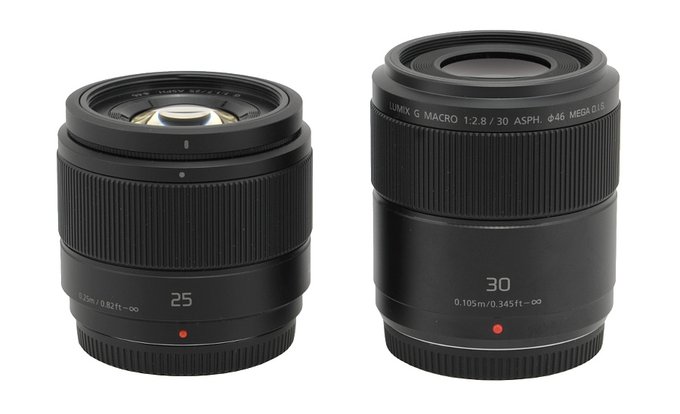 |
Please Support UsIf you enjoy our reviews and articles, and you want us to continue our work please, support our website by donating through PayPal. The funds are going to be used for paying our editorial team, renting servers, and equipping our testing studio; only that way we will be able to continue providing you interesting content for free. |
- - - - - - - - - - - - - - - - - - - - - - - - - - - - - - - - - - - - - - - - - - - - - - - -
The tested lens starts with a metal mount which surrounds a contact plate embedded in a black plastic ring on which there is a serial number and information that the device was made in China. A rear element of the lens is immobile, with a diameter of almost 20 mm.
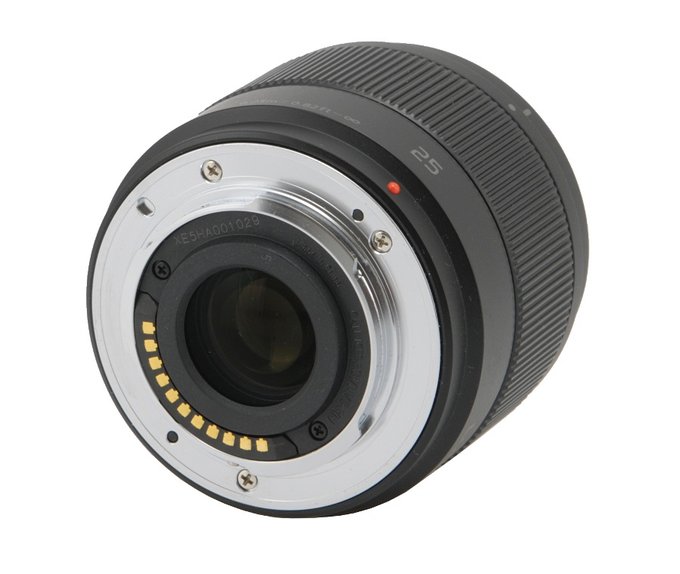 |
The proper body of the Panasonic 1.7/25 begins with a ring made of plastics which doesn’t move, with a red dot making an alignment with a camera easier. That ring increases its diameter and on the wider part there is a focal length mark, information concerning the focusing distance range (0.25 m/0.82ft to infinity), the name of the company, the line and the mount along with the logo of the lens.
It’s worth noticing that, because of those features the tested model differs from the Panasonic G 42.5 mm f/1.7 ASPH. POWER O.I.S. which, at first glance at least, seems to belong to the same line; still its ring is made of metal and it was produced in Japan.
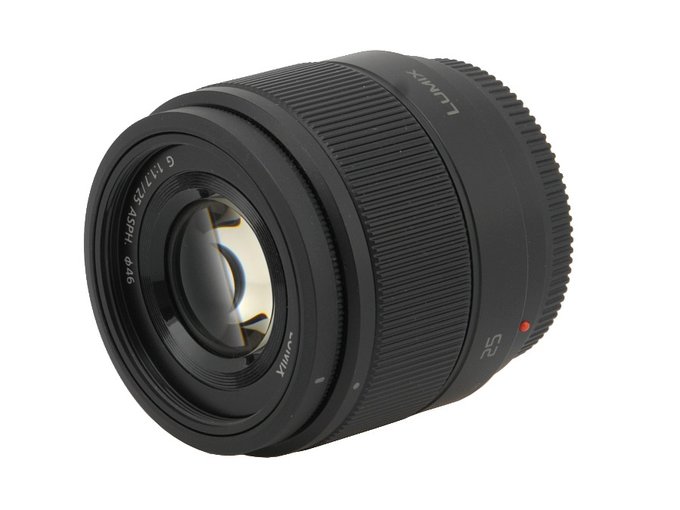 |
A manual focus ring is the next part; it is as wide as 23 mm and completely covered by plastic, ribbed armour. You won’t find any distance scale or a depth of field scale here. Running through the whole distance range takes a turn through an angle of about 180 degrees when you move the ring fast. That value might increase to even 360 degrees when the ring is turned slowly.
Behind the manual focus ring you see an immobile fragment of the casing which smoothly turns into a hood mount. There is also a narrow ring added to the lens which might be used as a protection cap of that mount.
The front element doesn’t move and is 26 mm in diameter; it is surrounded by an inscription stating the name and basic parameters of the lens along with a non-rotating filter thread, 46 mm in diameter.
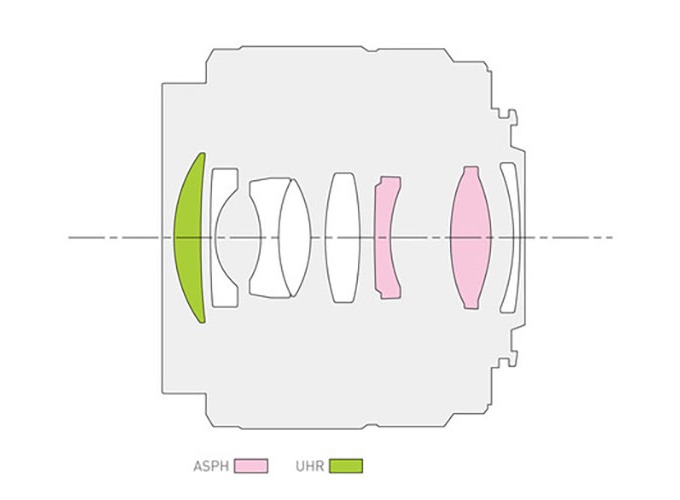
When it comes to the optical construction you deal here with 8 elements positioned in 7 groups. The front element was made of UHR glass (meaning Ultra High Refractive Index) and additionally two other elements are aspherical. Inside you can also find an aperture with seven blades which can be closed down to a value of f/22.
Buyers get both caps and a hood in the box with the lens.
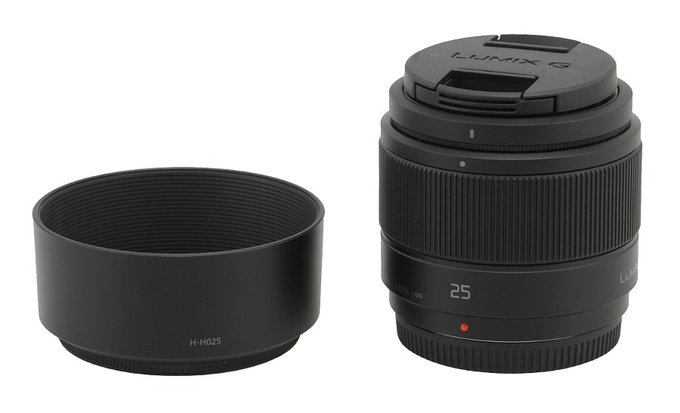 |






